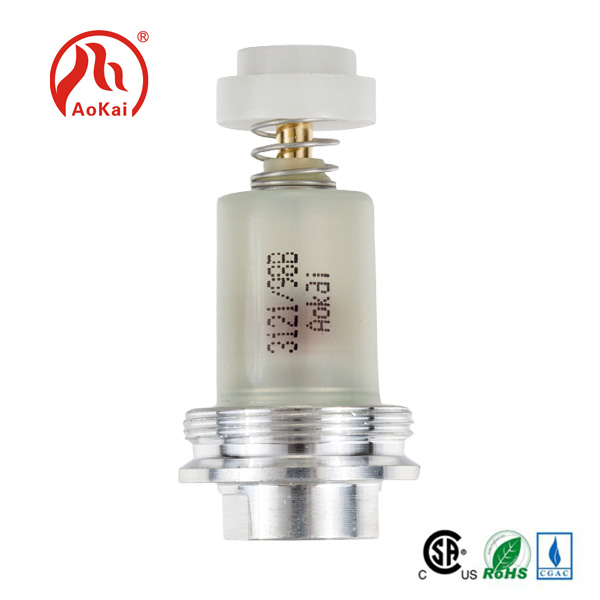The working principle of direct acting solenoid valve
2021-09-30
Working principle: When energized, the electromagnetic coil generates electromagnetic force to prohibit the closing part from the valve seat, which will turn on the oil; when the power is off, the electromagnetic force disappears, the spring will separate the closing part from the valve seat, and the gas will be turned off.
Features: Direct-acting solenoid valve that works normally under vacuum, negative pressure, and zero pressure, but generally does not exceed 25 mmWave diameter:
Work: The inlet and outlet are combined with the pilot type. When there is no pressure difference between the inlet and the outlet, the electromagnetic force directly pushes the pilot valve and the main closing part upwards to open the outlet. When the inlet and outlet reach the first start pressure difference, after power on, the electromagnetic force pilots the small valve to increase the pressure in the lower cavity of the main valve and decrease the pressure in the upper cavity, and use the pressure difference to push the main valve upward; when the power is off, the electromagnetic force or pressure pushes The closing piece makes the gas shut off.
Features: It can move at zero pressure or under vacuum and high pressure, but it cannot conduct electricity, and it must be installed horizontally.
Working principle: When electricity, the electromagnetic force opens the guide hole, the pressure of the upper cavity drops rapidly, and the high pressure difference between the upper cavity and the lower cavity is formed in the closing part. The fluid pressure of the normally closed solenoid valve pushes the closing part upwards, and the gas opens; when the power is off , The spring force closes the guide hole, and the introduction pressure through the bypass hole rises rapidly, forming a high pressure in the lower cavity and the lower cavity in the closing member, and the body pressure promotes the movement of the closing member, closing and closing.
Features: Direct-acting solenoid valve that works normally under vacuum, negative pressure, and zero pressure, but generally does not exceed 25 mmWave diameter:
Work: The inlet and outlet are combined with the pilot type. When there is no pressure difference between the inlet and the outlet, the electromagnetic force directly pushes the pilot valve and the main closing part upwards to open the outlet. When the inlet and outlet reach the first start pressure difference, after power on, the electromagnetic force pilots the small valve to increase the pressure in the lower cavity of the main valve and decrease the pressure in the upper cavity, and use the pressure difference to push the main valve upward; when the power is off, the electromagnetic force or pressure pushes The closing piece makes the gas shut off.
Features: It can move at zero pressure or under vacuum and high pressure, but it cannot conduct electricity, and it must be installed horizontally.
Working principle: When electricity, the electromagnetic force opens the guide hole, the pressure of the upper cavity drops rapidly, and the high pressure difference between the upper cavity and the lower cavity is formed in the closing part. The fluid pressure of the normally closed solenoid valve pushes the closing part upwards, and the gas opens; when the power is off , The spring force closes the guide hole, and the introduction pressure through the bypass hole rises rapidly, forming a high pressure in the lower cavity and the lower cavity in the closing member, and the body pressure promotes the movement of the closing member, closing and closing.
Features: Large hydraulic range, can be installed arbitrarily (need to be done), but must meet the hydraulic differential conditions.




